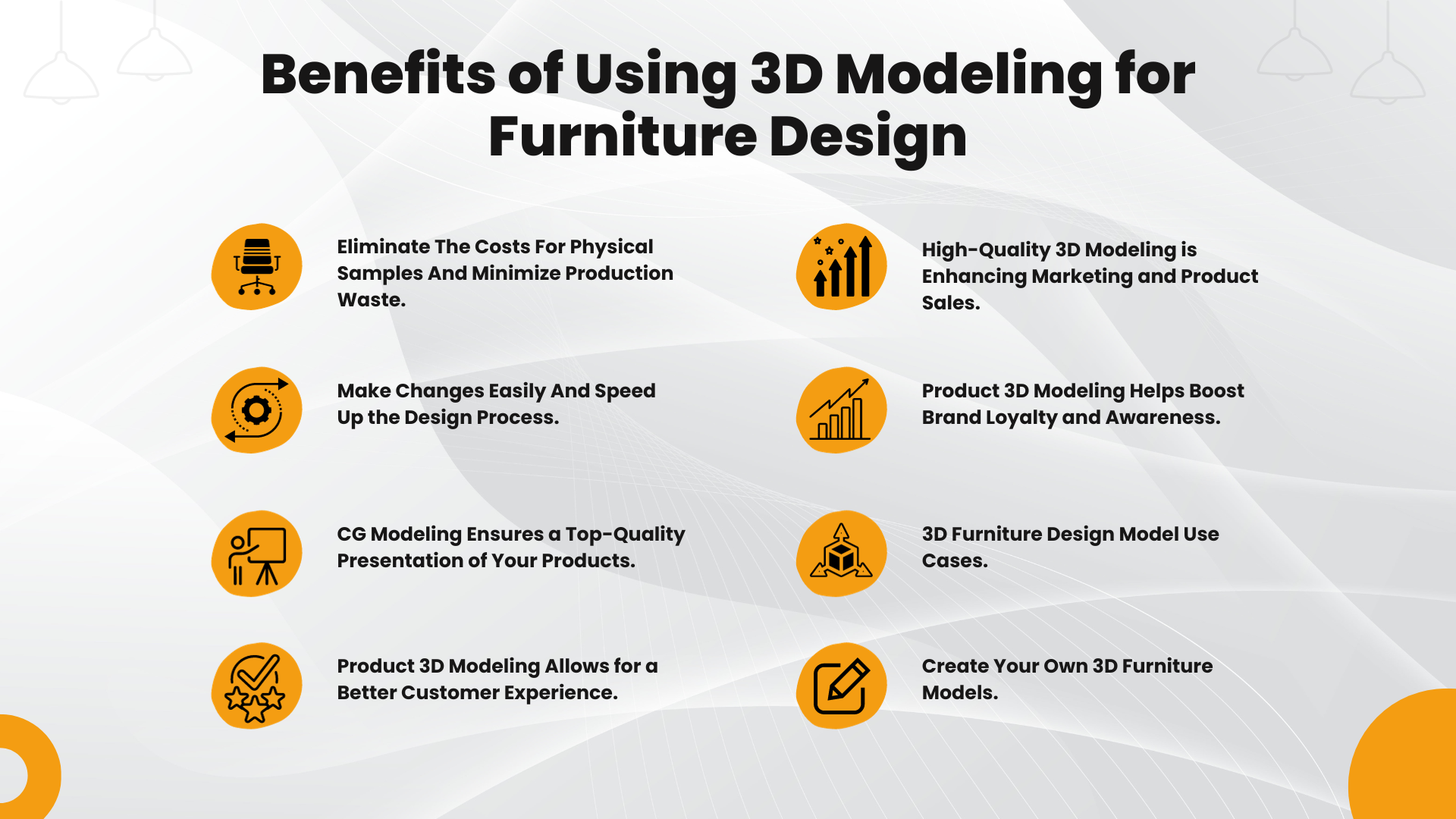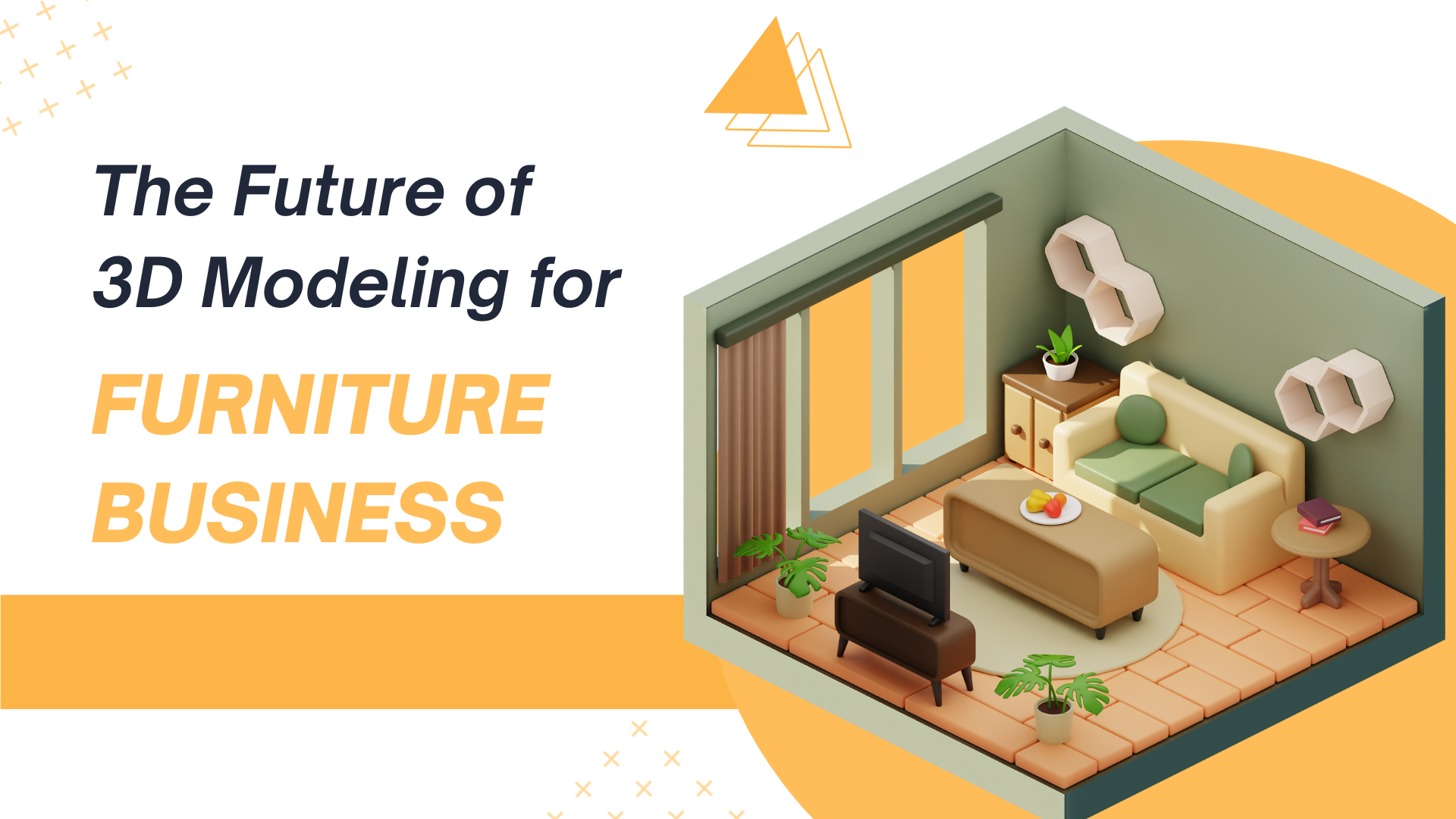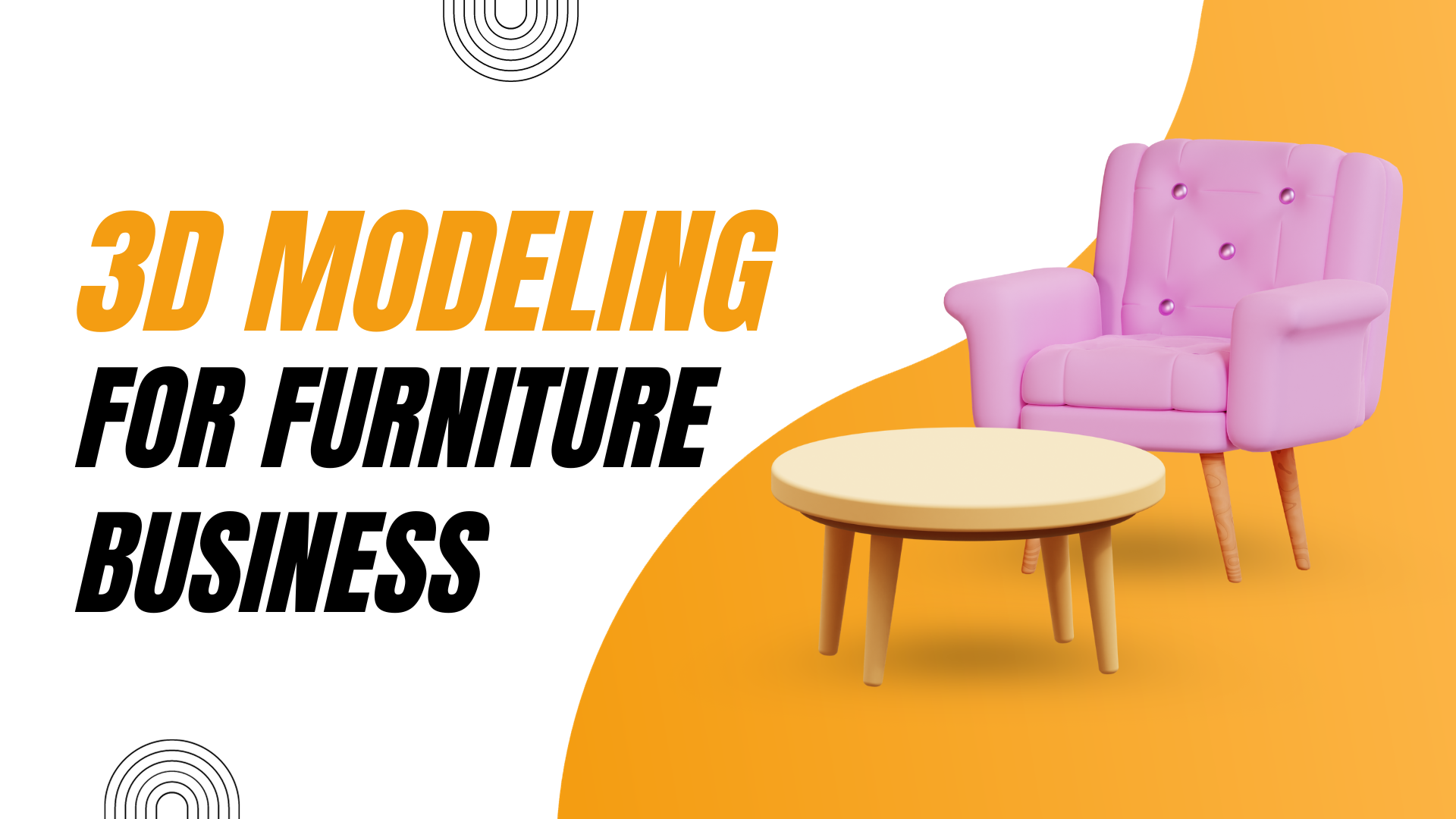Furniture design is a very complex field where creativity meets functionality. 3D modeling has become a real turning point, changing the entire industrial landscape. In the furniture industry, 3D Modeling for Furniture Business is becoming increasingly important. Previously, designers used 2D sketches and physical prototypes, a process that was not only time-consuming but also limited in scope.
By using 3D modeling for furniture industry designers can no longer limit themselves to paper and pencil. Now they can explore complex details, textures and dimensions with unprecedented precision using digital modeling.
What is 3D Modeling for Furniture Business?
3D modeling is the process of creating a three-dimensional digital representation of an object or space. This technology allows designers to create detailed and realistic prototypes of furniture before actual production.
For the furniture industry, 3D modeling involves creating digital images of furniture in three dimensions. Using these digital models built with precision and creativity, designers and manufacturers can explore, modify and present their products in a virtual environment, providing detailed visual prototypes of their furniture.
3D modeling revolutionizes traditional design and manufacturing methods. It provides designers with a dynamic platform for experimentation, allowing them to quickly iterate on designs, modify them, and visualize the final product in a real-world environment. The ability to quickly prototype an idea reduces lead time as well as the need for physical prototypes.
To check out our work 3D modeling click here: https://prismartstudio.com/service/3d-modeling/
Benefits of Using 3D Modeling for Furniture Design: Shaping the Future of Interior Spaces

Eliminate The Costs For Physical Samples And Minimize Production Waste: The main advantage of 3D Modeling in Furniture Business is that it eliminates the need for physical prototypes.
Traditionally, tangible samples require a lot of time and capital investment. Using 3D modeling, designers can visualize their designs digitally, eliminating the need for expensive physical models.
Additionally, this method significantly reduces production waste, resulting in a more sustainable and environmentally friendly production process.
Make Changes Easily And Speed Up the Design Process: With the constant change in furniture design, 3-D modeling makes it possible to make changes quickly and accurately.
Designers are able to experiment with various styles, dimensions, and materials without having to deal with physical limitations. By fostering a culture of innovation within the industry, this agility speeds up the design process, allowing for rapid iterations.
CG Modeling Ensures a Top-Quality Presentation of Your Products: With computer-generated (CG) modeling for interior design, companies can present their products in the best possible light using high-quality animations and renderings .
These visual representations are vital for marketing campaigns, online catalogs and client presentations, ensuring high-quality presentations that last a lifetime.
Product 3D Modeling Allows for a Better Customer Experience: For consumers, buying furniture is more than just a simple transaction; it is a 3D Modeling experience that enhances this experience by allowing potential buyers to virtually interact with the product.
They can explore intricate details, view components in a variety of settings, and even customize features. This rich experience not only engages customers on a deeper level but also instills confidence in their purchasing decisions.
High-Quality 3D Modeling is Enhancing Marketing and Product Sales: Digital marketing requires captivating visuals. High-quality 3D Modeling for Furniture Business and animations provide eye-catching marketing materials that stand out in crowded markets.
These images help increase brand visibility, attract potential customers, and drive product sales, whether used for online ads, social media campaigns, or promotional videos. .
Product 3D Modeling Helps Boost Brand Loyalty and Awareness: High-quality 3D models demonstrate the brand’s commitment to customer satisfaction and quality. Engaging 3D content drives brand loyalty and satisfied customers are more likely to recommend the brand.
Additionally, these images build brand awareness, establish a strong brand presence in a competitive market, and leave a lasting mark in the minds of consumers.
3D Furniture Design Model Use Cases: The use of 3d furniture sketchup is not limited to simple visualization. Architects and interior designers incorporate these models into their plans, allowing clients to accurately visualize their final designs.
The manufacturing process can be streamlined with 3D rendering, ensuring precise production that is completely consistent with the design intent.
Additionally, these renderings can be used to develop assembly instructions and training materials, further simplifying the manufacturing process.
Create Your Own 3D Furniture Models: 3D models have another notable feature: its accessibility. It’s easy for design enthusiasts and aspiring interior designers to learn and create their own unique furniture using 3D modeling software and online tutorials.
With user-friendly software and online tutorials, individuals can unleash their creativity by experimenting with colors, textures and designs. The democratization of design encourages a community of innovators, bringing new ideas and perspectives to the industry.
How can manufacturers benefit through 3d furniture renderings?
When 3D Modeling for Furniture Business rendering is integrated into a furniture manufacturer’s workflow, they reap huge benefits. In addition to being precise designs, these drawings also ensure that each product produced is exactly what the designer intended. With such precision, manufacturing errors are minimized, thereby reducing material waste and costs.
Additionally, 3D furniture rendering simplifies the prototyping process. Traditionally, creating physical prototypes can be time-consuming and expensive. With 3D rendering, manufacturers can visualize product details before physical production, allowing for faster iterations and adjustments. The result is shorter lead times and a more responsive and flexible manufacturing environment.
The availability of free 3D furniture models, such as chair 3d model, sofa 3d model, bed 3d model, 3d chair, table 3d model, gaming chair 3d model represents a revolution that empowers designers, delights customers and creates a world without Limits to furniture design.
3D renderings serve as invaluable marketing assets. High-quality visuals enhance marketing materials, making them more engaging and attractive to potential buyers. Manufacturers can showcase their products in various settings and configurations, catering to different customer preferences. These visually appealing presentations significantly boost the chances of successful sales, thereby increasing revenue streams for manufacturers.
The Future of 3D Modeling for Furniture Business

3D Modeling for Furniture Business will profoundly reshape the furniture industry in the future. In the furniture industry, 3D modeling will become an increasingly important tool as technology advances and consumer demand for personalized, immersive experiences increases.
The first advantage of 3D Modeling for Furniture Business is the ability to create hyper-realistic virtual prototypes for furniture companies. Digital models allow designers to visualize complex details and structures before physical production.
Ensure faster time to market for new designs by minimizing manufacturing errors and accelerating product development cycles. The customization options offered by 3D modeling are unprecedented.
Customers can customize their furniture online by adjusting colors, materials and design using 3D images. Customers can virtually place furniture in their homes using augmented reality (AR) and virtual reality (VR) technology, providing realistic previews of how items will fit the home. their houses. Through this rich shopping experience, consumers develop a deeper emotional connection with the product, increasing sales and brand loyalty.
Additionally, 3D models and AI and ML algorithms can be integrated to provide predictive analytics. Businesses can predict demand patterns by analyzing customer preferences and market trends. With this data-driven approach, businesses can optimize their supply chains, reduce waste and remain agile and responsive to market changes.
The Final Takeaway,
It is clear that the adoption of 3D modeling in the interior design industry is not just a technological advancement but also a paradigm shift that has completely changed the landscape of the industry.
Using 3D Modeling for Furniture Business, designers have eliminated costs, accelerated the design process, improved customer experience and strengthened brand loyalty, ushering in a new era of interior design. the seventh. In the future, the synergy of 3D modeling with creativity and technology will certainly shape the interior space industry, creating designs that are not only functional but also truly impressive.




